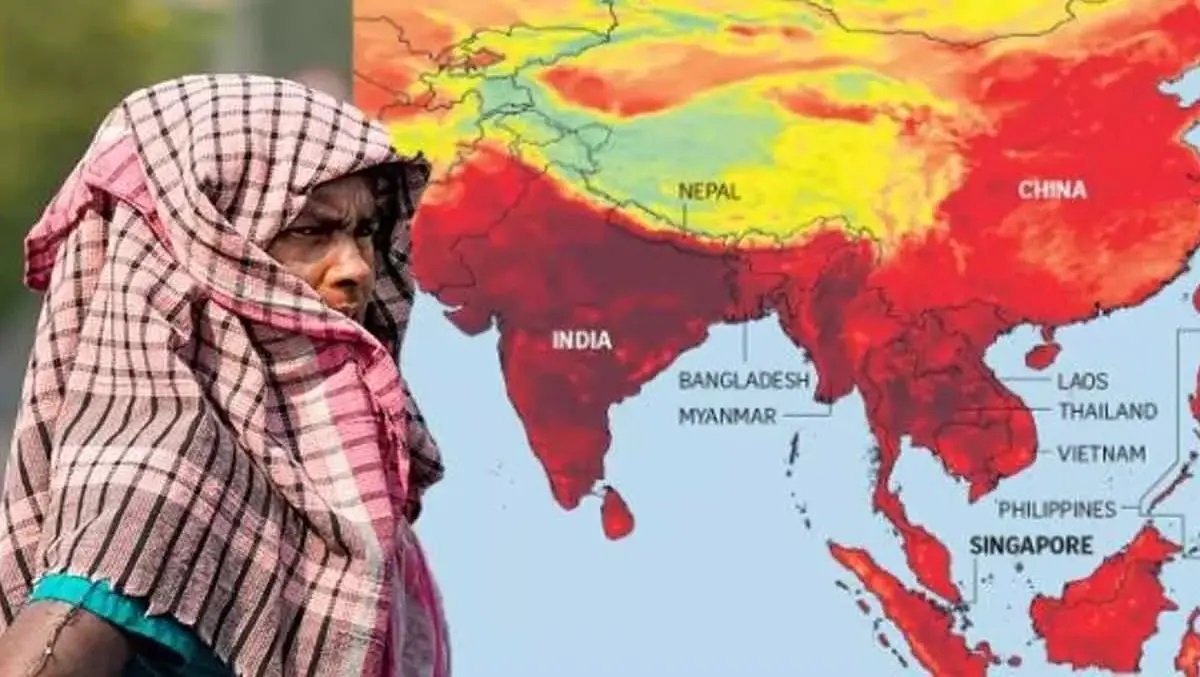Context:
April has been abnormally hot. In the first 26 days of the month, either a small pocket or a considerably large geographical area in India experienced heatwave conditions, according to the India Meteorological Department (IMD).
Background:
Intergovernmental Panel on Climate Change (IPCC) reports and analysis of weather models clearly indicate that heatwaves in India shall no longer remain contained over only those regions traditionally believed to be prone. Newer areas, especially from the southern peninsular India, are already experiencing heatwaves.
Which areas in India are prone to heatwaves?
- The Core Heatwave Zone (CHZ) spanning central, north, and peninsular India between Gujarat and West Bengal is prone to heatwave conditions every year, during the summer season March to June and occasionally in July.
- Rajasthan, Punjab, Haryana, Chandigarh, Delhi, West Madhya Pradesh, Uttar Pradesh, Chhattisgarh, Odisha, Vidarbha in Maharashtra, parts of Gangetic West Bengal, coastal Andhra Pradesh, and Telangana are the most heatwave-prone states or regions.
When does IMD declare a heatwave?
- IMD declares a heatwave when the normal maximum temperature recorded over at least two localities in plains touches 40 degree Celsius or exceeds 4.5 degree Celsius from normal. Heatwave is declared in hilly and coastal regions when temperatures cross 30 degree Celsius and 37 degree Celsius respectively.
- A severe heatwave is declared if the temperature departure exceeds 6 degree Celsius from normal.
Why has April been so hot?
- One, 2024 is a year that began in an El Niño state.
- El Niño, is a climate pattern that describes the unusual warming of surface waters in the eastern Pacific Ocean, which leads to extreme heat in many parts of the world and the ocean. It developed in June 2023 and generally, the years which begin in an El Niño state, experience extreme temperatures, harsh, multiple and extended heatwave spells, and lack of pre-monsoon rainfall.
- Two, the persistent presence of anticyclone systems over southern peninsular and southeastern coastal areas is also partly responsible for such a hot April. These high-pressure systems, which exist at about the altitude of 3 km and extend between 1,000 and 2,000 km in length, push the air underneath them towards the Earth, in a process called air subsidence. As a result, the forcefully sunk air generates more heat on the surface closer to the Earth.
- The presence of anticyclone systems also leads to wind flow from land towards the sea and prevents the incoming cooler sea breeze, which is otherwise responsible for cooling land from time to time.
- El Niño and anticyclone systems collectively created sweltering hot conditions and heatwaves during April, especially over Gangetic West Bengal, Odisha, Andhra Pradesh, Telangana, Tamil Nadu, Kerala, Karnataka, and Maharashtra.
What has been the extent of heatwaves this April?
- Except for four days (April 1, 10, 11 and 12), a small pocket or a considerably large geographical area of the country experienced either heatwave or severe heatwave conditions, according to the IMD.
- The worst affected were southern peninsular India and the southeastern coast areas, including Odisha, Andhra Pradesh, and Tamil Nadu along with large areas of Karnataka, Kerala, Sikkim, Bihar, Jharkhand, and Gangetic West Bengal.
- The inclusion of Kerala and Sikkim to the list of heatwave-affected areas indicates that the temperatures are rapidly rising during summers over regions outside that of the CHZ.




Comments (0)